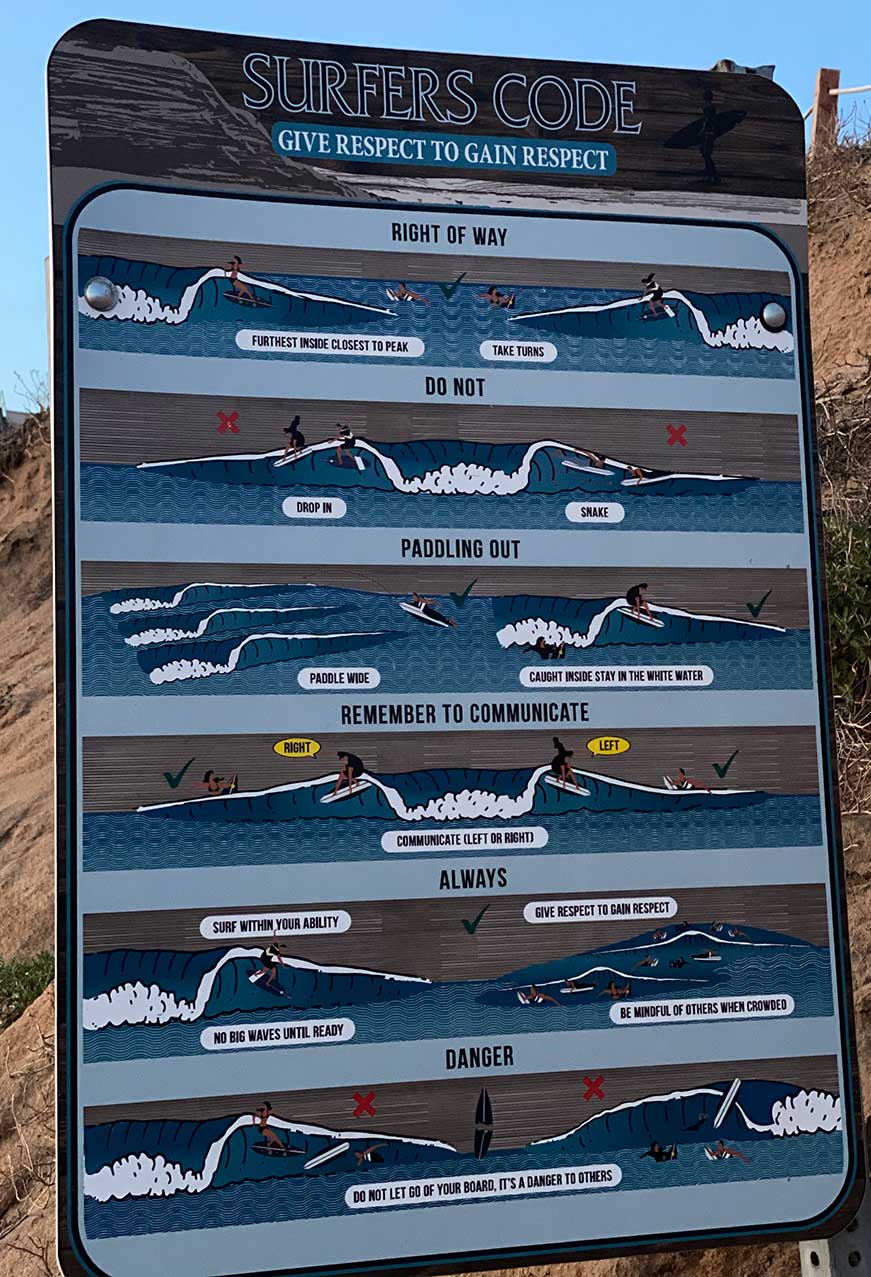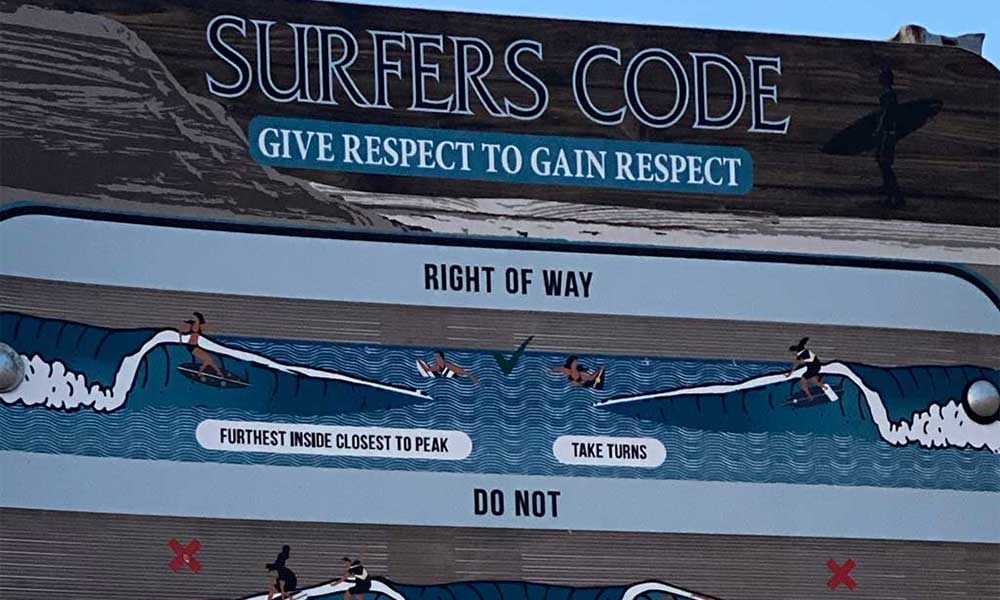Treat others as you would like to be treated, even when surfing.
There is an etiquette around surfing.
If you give your respect to the other surfers, you will get the same respect in return.
Proper conduct when surfing is not only polite; it also shows your respect for the other surfers, your willingness to be social, and your cooperation with others.
Most importantly, proper etiquette in the water also helps keep everyone safe.
Which Surfer Has the Right of Way on a Wave
It is important to know who has the right of way on the water.
The surfer who is closest to the curl at the point of takeoff has the right of way.
If there is a wide take off zone where multiple surfers can paddle for the same wave and it is unclear where exactly the wave will break, the surfer deepest from the shore has the right of way.
As a grom new to the waves, you may not find yourself in this situation much.
Don’t Be a Kook. Don’t Drop In.
You can be a grom (new to surfing) without being a kook (the surfer everyone else in the water doesn’t like).
Don’t drop in on your fellow surfer.
Catching another surfer’s wave is called “snaking” or “dropping in” and is a breach of surfing etiquette.
Dropping in or snaking another surfer’s wave won’t help you make friends in the water.
Dropping in on another surfer’s wave is also dangerous.
It can get you hurt if the surfer in the right doesn’t see you paddling for the wave.
Alternatively, you can get someone else hurt if the surfer who is closest to the breaking wave needs to turn abruptly towards the beach and hits someone else.
A lack of surfing etiquette can be both inconsiderate and dangerous to everyone in the water.
What’s most important to remember is to catch waves that no one else is riding.
Follow this rule and you will go far.

Stay Out of the Way of Other Surfers
People new to surfing sometimes try to paddle to the place the waves are break by paddling through the wave straight out to the lineup where the other surfers are sitting.
For you, this leads to fatigued arms from unnecessary paddling.
For others, it creates dangerous situations, as there are surfers riding the waves you are padding through.
Build good habits from the start and paddle around the breaking waves as much as possible.
You also want to be able to read the wave and the surfer who is paddling to catch it.
By doing so, you will be able to avoid paddling across the other surfer’s path.
If you find yourself padding out and you are faced with a surfer padding for a wave, paddle towards the broken part of the wave to avoid the surfer and learn how to duck dive.
You can also paddle over the unbroken shoulder of the wave if you don’t get in the way of the surfer who will be up and riding.
Sooner or later, every surfer gets in someone’s way for one reason of another, but you can avoid many collisions and close calls by padding around the break.
What to Do When Someone Is Next to You
When you realize that someone is near you or within a couple of board lengths, paddle wide.
Call out your location to let the person on your right know that you are passing to his or her left and going farther out into the water.
Avoid throwing your board at any point.
Another surfer could be near you and get hit by the board.
When to Not Take a Wave
If you caught two waves in a row, and another surfer has been waiting, pass up the next wave so the other person can get it.
If there is a big lineup, ride one wave and get back to the end of the line.
If you realize that the wave is bigger than your comfort level, drop back.
If you see that somebody else is waiting, call out to them to tell them it is theirs for the taking.
A simple “Go!” or “All you!” will do let the other surfer know they’re free to take the wave.
Understand Your Place in the Lineup
Understanding your place in the lineup is important when there are a lot of surfers in proximity to each other.
Remember that priority or next up is farthest out or closest to the peak.
Only paddle out as far as you are comfortable.
If you go out too far and get nervous, you may get in the way of other surfers.
Communicating with the Other Surfers
If you catch a wave and see that someone else is trying to get on it, give the person a shout out.
Try a “Hey!” or “Coming down!” to alert the other surfer that you were up first and you are behind them.
Communicating with the other surfers goes a long way in being courteous and respectful.
If you make an error, apologize right away.
A quick explanation of recognizing your error and admitting fault will bring good vibes to your rides.
These simple etiquette rules will help you earn and maintain respect when surfing.
Knowing the rules of etiquette for surfers will also help you to know what to expect of others who are surfing nearby.
Follow these basic surfing etiquette tips and you’ll be acting like a surfing pro in no time!







